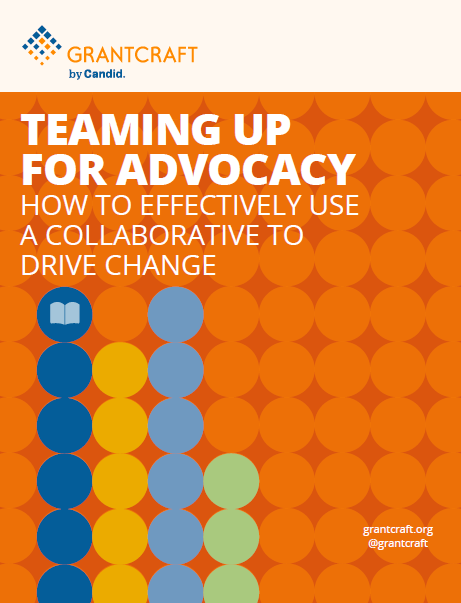Decision-Making Tree
Members of a prospective advocacy collaborative have a lot of decisions to make together. Experienced funders said that clarity on these issues early on is essential for good relations and success later on. Here’s a rough guide to aid the start-up process.
PURPOSE:
- Do we want to advance an issue, a strategy or field? Or something else? For example: More funding for public education (issue) through community organizing (strategy) as part the education reform (field).
- What are the specific goals we want to see implemented? For example: passage of a particular bill, Supreme Court decision, policy implemented at local/state level, countering opposition attacks, public awareness and/or action about our issue, research/data about the issue, etc.
- On what level will we focus: Local, state, regional, national, or international?
- What are our core values and commitments?
- What strategies will we use as a group to reach our goals (e.g., grants, capacity building for grantees, communications, research, etc.)? Which strategies will we support through our collaborative work (e.g., community organizing, policy advocacy, research, communications, state/local work, etc.) Are these similar or different? How and why?
- How will we decide on strategies? Will grantees/field experts be involved? If so, how?
- How will we safeguard the interests of grantees; for example, will we require that donors commit “new money” only to the collaborative’s funding (i.e., funds above and beyond what they’re already providing through their own institutions)?
STRUCTURE:
- Do we want staffing for our advocacy collaborative? If so, what do we want them to do (e.g., back office, docket preparation, due diligence, evaluation, etc.)? Are there some tasks we want to do?
- Do we want to be a pooled fund? Or one that’s strategically aligned?
- If we are a pooled fund, how will this be structured and administered?
- Is there a financial commitment required? Will there be a minimum commitment? Should larger institutions commit more (e.g., a “sliding scale”)?
MEMBERSHIP:
- Will we limit the size of the advocacy collaborative or involve as many funders as possible?
- Who is eligible to participate: foundations, individual donors, public funding agencies, etc.?
- Do we want a diverse set of members (e.g., local, small/large, national/local, private/corporate, etc.)?
- Will non-grantmakers participate? If so, how?
- What is the financial commitment required, if any?
- How will we safeguard the interests of grantees; for example, will we require that donors commit “new money” only to the collaborative’s funding (i.e., funds above and beyond what they’re already providing through their own institutions)?
- Will members be expected or required to participate in meetings and events, review grant proposals, serve on committees? How much time do we expect these activities to require?
- How will we identify and incorporate new members and how often will we do this?
- How will we build strong relationships, trust and a collaborative culture among members?
- If conflict occurs, what will we do about it?
GOVERNANCE:
- Will there be a formal governance committee (e.g., chairperson, steering committee, etc.)? If so, what will their responsibilities be? How will they be selected?
- Will the full membership make grantmaking and resource decisions? Will others (e.g., staff, steering committee, advisors, grantees, etc.) be involved? If so, how?
- How will we make decisions? Will each funding institution or member have one vote? Or will voting privileges be proportional to the amount of members’ financial commitments?
- What if we reach an impasse and can’t decide? How will we resolve this?
GRANTS AND RESOURCES:
- Will we use an RFP process or open application? Or will we invite applications or otherwise narrow the pool of potential grantees? Will we use a common application?
- How many grants or other resources will we allocate annually? Of what amount and on what grant cycle?
- If we are going to regrant, will smaller or local institutions be required to match commitments in some way?
- Will we provide financial resources only or other supports such as technical assistance, networking opportunities or other kinds of capacity-building help?
EVALUATION:
- How will we determine whether we’ve been successful?
- How will we measure progress toward our goals? How will we measure the outcomes? Impact?
- Will non-grantmakers play a role in evaluation? If so, how?
SUSTAINABILITY/ TERMINATION:
- If we don’t plan to exit in the near future, how will we sustain this work over the long term? How will we fundraise/bring in new donors?
- What is our exit strategy?
- How will we know we’re ready to end the advocacy collaborative or move it to a new home?
Please click here for information on GrantCraft’s methodology for this research.


